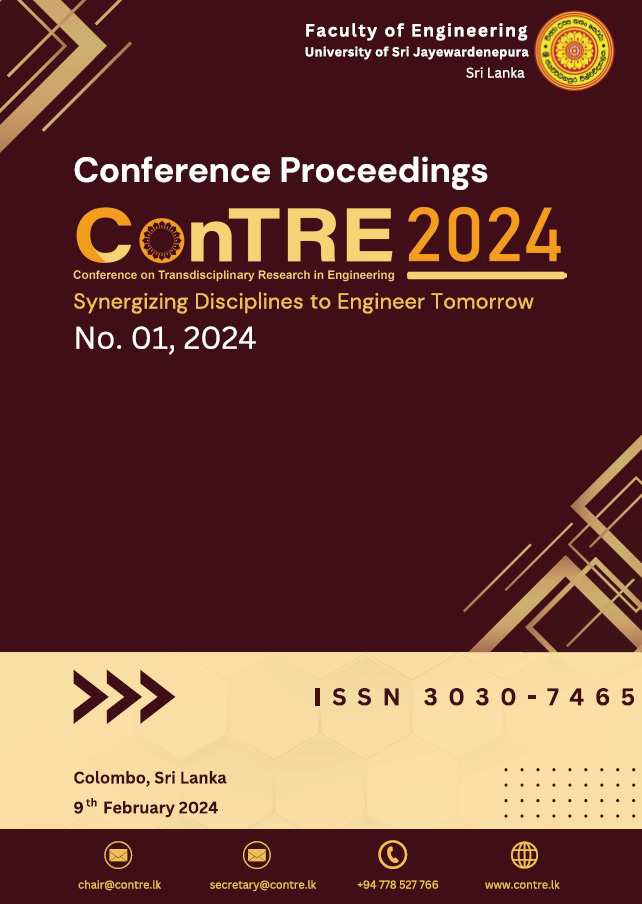IoT-Enabled Water Quality Monitoring and Alum Dose Determining System
DOI:
https://doi.org/10.31357/contre.v1i1.7391Keywords:
Alum dosage, Automated, IoT-enabled, Machine Learning Model, Water quality, Water treatmentAbstract
The water treatment process involves a series of physical, chemical, and biological techniques and methods designed to remove contaminants, impurities, and undesirable substances from raw or untreated water to make it safe, clean, and usable. Adverse weather conditions, such as rainy seasons and floods, present significant challenges, and difficulties to the water treatment process. Alum is mainly used for reducing the turbidity of the water in the treatment process. In Sri Lanka, all water treatment plants use the Jar Test to determine the Alum dosage manually. They conduct Jar Tests to measure raw water quality in their laboratories. The Alum addition valve is set to a pre-determined quantity and the value is decided based on the experience of the technicians. Since there is no specific formula, the presence of an experienced technician is required to determine alum dosage using the Jar test. Thus, this study intends to propose an automated system for determining the optimum Alum quantity to be added to a given raw water sample. This is achieved by designing an Internet of Things (IoT)-enabled sensing device for measuring the water quality, which feeds data to a Machine Learning Model trained to predict the Alum quantity to be added. The task of the Machine learning model is to identify the pattern of raw water parameters and Alum dosage. By doing this, a could be provided a guideline for determining alum dosage instead of a manual Jar test and removed the necessity of experienced technician support always. A user-friendly web interface will allow the operators to customize the parameters according to the requirement and display a detailed analysis report. The predetermined quantity of Alum is transmitted to the output Alum adding value, to enhance its performance as an automated control rather than doing the addition process manually. This is a conceptual study on how to determine the Alum dosage using Raw water parameters and past experiment results.


